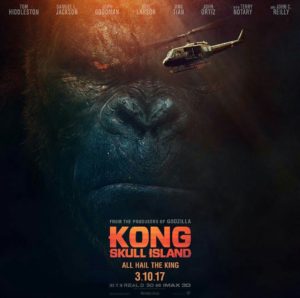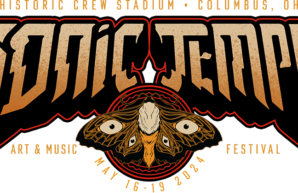There are icons throughout the history of Hollywood, but few have reached the magnitude of King Kong. Spanning every possible form of media from 1933 to the present day, there are numerous interpretations of the colossal gorilla.
Kong: Skull Island has cheapened the sacred beast and has turned him from a dynamic misunderstood character to another opportunity to increase sales at the box office.
Rebooting a classic that dates back to the early days of Hollywood cinema should always be done carefully, but this film takes the familiar classic and throws the entire history of the franchise away by dropping King Kong into the 1960’s just after the Vietnam War had ended.
A criticism of the 2005 King Kong remake was that Kong did not make an appearance until more than an hour into the film. Kong Skull Island shows him during the opening scene, but he then makes few appearances throughout the film. Only arriving during vital scenes where he must battle creatures to save the main cast of the film, he is portrayed almost as a body guard but without any reasoning behind his behavior.
Lacking from the film is a major plot point that should be integrated with any interpretation of King Kong, his relationship with a human female. Yes it can be a little awkward, but taking away this entire plot point removes Kong’s empathy and also the motivation of his actions.
The character development was nonexistent throughout the film, introducing us to numerous characters which all but a few met their untimely demise. The main protagonist of the film William Randa, played by John Goodman, was a carbon copy of the conspiracy theorist he played in 10 Cloverfield Lane. The native inhabitants of Skull Island were interpreted as a humorous joke within the film, making their means of survival questionable.
Kong Skull Island had no direction when it came to a plot. Beginning as a quest to research Skull Island, the expedition team consisting of journalists and military personnel had to escape when suddenly the island was infested with “skull crawlers” that they had released with their explosives. Their trek across the island was most likely shortened to limit the length of the film, but had shrunk the extent of the island down considerably.
The atmosphere of the film had lacked the mystery and scale of the 2005 remake. Early in the film, the audience viewed Skull Island through satellite images, completely eliminating the secrecy of the island. It had gone from a myth to a known fact, entirely removing any type of journey that would most likely be required when visiting the last unknown place on Earth.
Kong was much larger within this film than he was portrayed in the 1933 original and 2005 remake. Kong was able to take down helicopters without even jumping. Kong could travel through the forest in the 2005 remake, while he was the size of a mountain in this film — preparing him for fighting Godzilla in the upcoming 2020 Godzilla Vs. Kong film.
The ending of the film felt as if the story had no purpose. Nothing was explained, no one accomplished anything, but at least John C. Reilly was able to return home to his family after being stranded on Skull Island for 28 years.
The 2005 King Kong remake had an amazing atmosphere, detailed story and character development. It was a homage to the 1933 King Kong and Peter Jackson had carefully constructed it to honor the original.
Overall the film is what you would expect from an average sci-fi monster series. It would have been much better off if it had not used the likeness of King Kong and was written about a different mythical creature.



